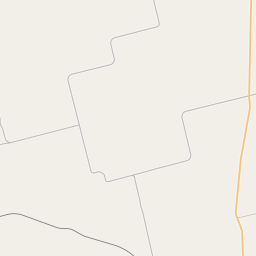Newman Community and Cemetery
Historical marker location:






Jim Newman, one of Fisher County's earliest settlers, established a ranch in this area about 1879. The community that developed near his ranch was named Newman when the county's first post office opened here in 1881. The town consisted of the Old Newman and Union Hall Schools, a post office/grocery store, and the Newman Baptist Church by 1901. The Newman Cemetery was legally set aside in a deed conveying property at this site for cemetery purposes in 1906. The first persons buried here were Miller Phigpen and J. E. W. Scott in 1906. Among the sixteen veterans of various wars buried here is American Civil War veteran R. L. Creswell. The Methodist Episcopal Church built a sanctuary here about 1908. Union Hall and Old Newman schools consolidated in 1913, and in 1924 a new brick schoolhouse was constructed. In 1929 the Methodist Episcopal and Baptist churches erected new sanctuaries. A steady decline in the area's population resulted in the dissolution of the Methodist Church in 1940, the school in the early 1940s and the Baptist Church about 1950. Vestiges of the town's church and school structures and the still active Newman Cemetery are all that remain of the former town of Newman. (1993)
As one of the most visible programs of the Texas Historical Commission (THC), historical markers commemorate diverse topics in Texas history, including: the history and architecture of houses, commercial and public buildings, religious congregations, and military sites; events that changed the course of local and state history; and individuals who have made lasting contributions to the state, community organizations, and businesses.
The city of Austin, the state capital, is known as the live music capital of the world. It is home to many music festivals, including South by Southwest (SXSW) and the Austin City Limits Music Festival.
The early settlers of Fisher County were primarily ranchers and farmers who were attracted to the fertile land and abundance of water sources, particularly the Colorado River. These pioneers faced many challenges, including severe weather conditions and conflicts with Native American tribes in the area. However, they persevered and gradually developed thriving communities, mainly centered around farming and ranching.
The arrival of the railroad in the late 1800s greatly enhanced the county's economic development. The railroad allowed for the transport of goods and improved access to markets, leading to the growth of towns such as Roby and Rotan. With the expansion of the rail network, Fisher County became an important transportation hub in the region.
In the 20th century, Fisher County faced some setbacks, including the effects of the Great Depression and a decline in population due to the mechanization of farming. However, the discovery of oil and gas reserves in the area in the 1940s provided a boost to the local economy. Today, Fisher County continues to rely on agriculture, oil and gas, and small businesses as its main economic drivers, while also preserving its historical heritage through museums and cultural events.
Fisher County Timeline
This timeline provides a concise overview of the key events in the history of Fisher County, Texas.
- 1870: Fisher County was established on February 1, 1876, and named after Samuel Rhoads Fisher, a signer of the Texas Declaration of Independence.
- 1880s: The first settlement in the area was established near the Clear Fork of the Brazos River.
- 1890s: The county experienced a population boom with the arrival of the Texas Central Railroad.
- 1911: The town of Roby was designated as the county seat of Fisher County.
- 1930s: Fisher County, like the rest of the country, was greatly affected by the Great Depression.
- 1940s: The discovery of oil and gas in the county led to economic growth and increased population.
- 1970s: The county faced economic challenges due to declining oil prices.
- 2000s: Fisher County continued to be primarily agricultural, with farming and ranching as the main economic activities.